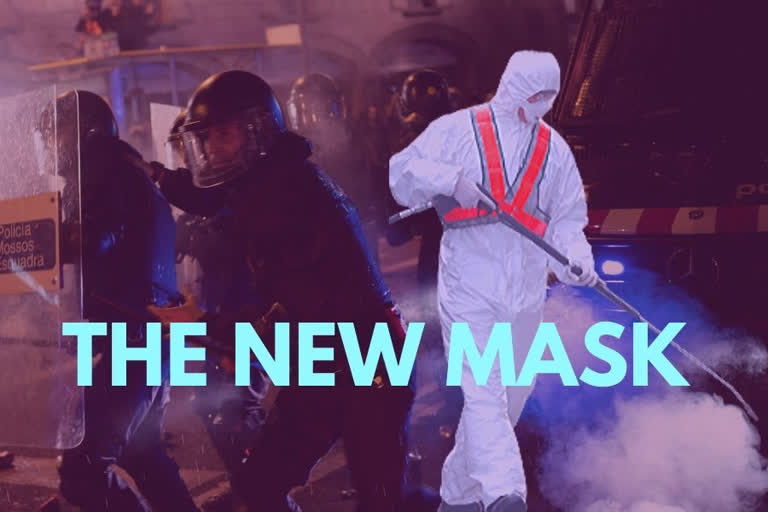Beirut: As 2019 gave way to 2020 in a cloud of tear gas, and in some cases a hail of bullets, from Hong Kong to Baghdad, from Beirut to Barcelona and India, it seemed civil disobedience and government crackdowns on protests would dominate the international landscape. Then came the coronavirus.
Protests, by their very nature driven by large gatherings, have been doused. Streets crammed with tens of thousands of chanting protesters are largely deserted. Masks worn to protect against tear gas are now worn to protect against the virus. A very different kind of fear has set in around protest camps and around the world.
The global unrest spanned three continents last year, fueled by local grievances but reflecting worldwide frustration at growing inequality, corrupt elites and broken promises. In Hong Kong, Beirut and Barcelona, images of euphoric protesters captured people’s imaginations around the world even as they were beaten back, and in some cases, shot dead by police.
In most of these places, the protests had waned even before the outbreak — a combination of fear and fatigue giving way to resignation or apathy. The spreading new coronavirus has in some cases given authorities a means to further suppress the protests.
But the movements are not over. Even with the panic and adjusted daily behavior engulfing the world, some continue to demonstrate, insisting they have sacrificed too much to give up. With the street revolts underlying causes largely unaddressed, those surviving remnants could eventually swell once more.
SIGNATURE FACE MASKS
Hong Kong’s protesters made face masks a signature of revolt, wearing them to protect against tear gas and conceal their identities from authorities.
These same masks are now ubiquitous around the world -- worn by people from China and Iran, to Italy and America, seeking to protect against the coronavirus. In Hong Kong, major anti-government protests that at times drew hundreds of thousands of marchers began to tail off late last year.
But smaller-scale gatherings continue to spring up, mostly to mark the anniversary of key incidents during last year’s demonstrations, underlining the refusal of city leader Carrie Lam to give in to most of the movement’s demands.
In India, fear of the virus has had almost no impact on an 85-day-long sit-in led by women in New Delhi’s sprawling Muslim-majority neighborhood of Shaheen Bagh, now an epicenter of the protests over a disputed new citizenship law. Hundreds of women take turns maintaining the around-the-clock gathering.
The demonstrators demand the revocation of the citizenship law, which fast-tracks naturalisation for religious minorities from several neighboring countries, but not Muslims. The law caused an explosion of communal violence and rioting in New Delhi, with dozens killed.
Organizers say more women and children were now participating in the sit-in after authorities closed all primary schools in the capital because of the coronavirus.
“We are also taking the necessary precautions by wearing masks,” said Hena Ahmad, a protester.
In a twist, thousands of women across Mexico made their protests felt this week by staying home from work and school, to demonstrate against gender-based violence. And teenage climate activist Greta Thunberg called for digital protests for now, to slow the spread of the coronavirus.
‘BETTER TO DIE PROTESTING’
The protest camps in central Beirut and Baghdad are subdued. The coronavirus was the last straw for two struggling protest movements that for a short while seemed like they might actually achieve at least some of the social change they so desperately aspired for.
Both countries, scarred by long conflicts and on the brink of economic collapse, erupted last October in unprecedented, spontaneous anti-government revolts, calling for revolutionary change. “Thieves!” they shouted to describe a hated and corrupt ruling class they blame for their current despair.
But security crackdowns, disputes among the protesters, economic exhaustion and a craving for normalcy greatly diminished the rallies in recent weeks.
(AP report)



